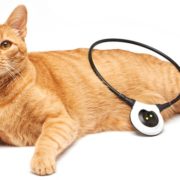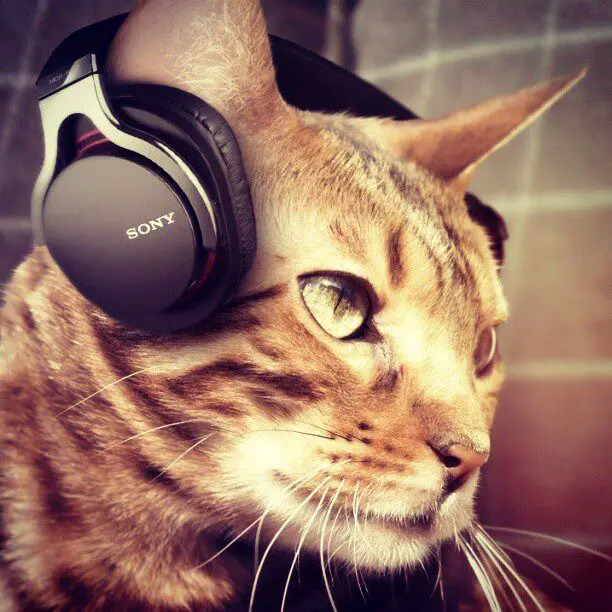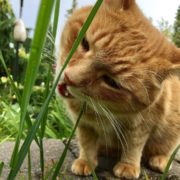Dogs and cats can develop amazing friendships – or, if things don’t go as well, also drive each other and their owners crazy. As a professional dog trainer, I encounter difficult cat-dog relationships every week.
While it is possible to improve the behaviors of both pets once the problems have started, the best way to go about owning cats and dogs is to be proactive. Doing research and finding the right dog breed to add to your cat will go a long way towards having them develop a harmonious relationship.
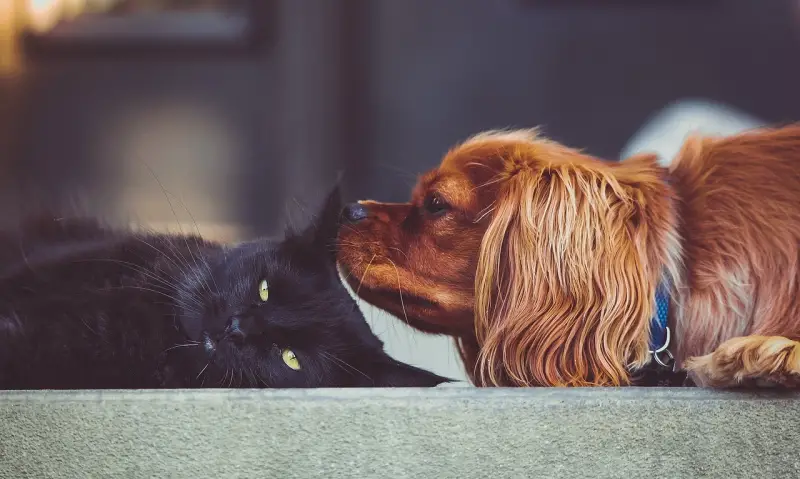
In this post we will look at what you should watch out for when acquiring a dog and which breeds generally do the best with cats.
Genetics are Strong
Some owners like to claim that it is all “how you raise them”. However, this is not true when it comes to dog behavior! Dogs have strongly ingrained drives and motivations. These are based on their original breed purpose.
A hunting dog for example will always be triggered by anything small and fast-moving (like a cat). A herding dog is likely to relentlessly stalk cats. On the other hand, small companion breeds often get along great with cats, because they do not possess a lot of prey drive or motion sensitivity.
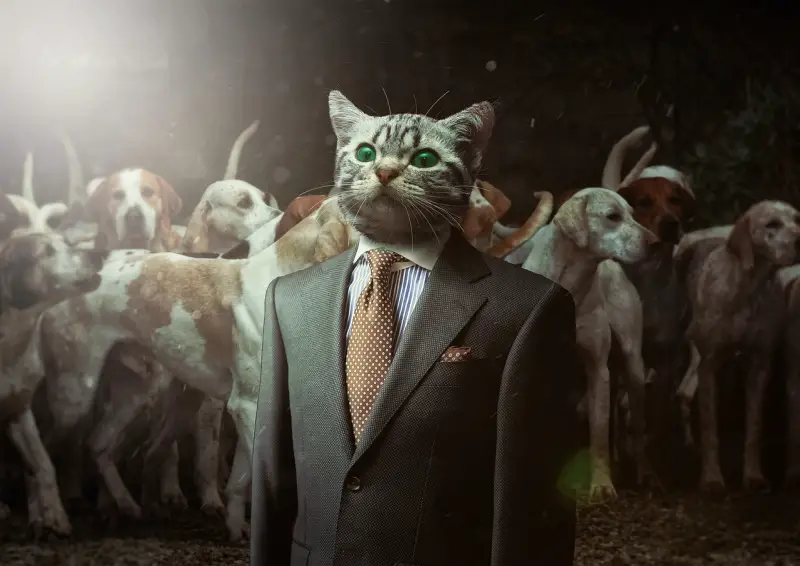
Dog Breeds to Avoid
Popular dog breeds that you should absolutely avoid getting if you own a cat are:
- Huskies
- Pitbulls
- Australian Shepherds
- Border Collies
- German Shorthair Pointers
- Weimaraners
- Belgian Malinois
- Australian Cattle Dogs
- Greyhounds (especially rescued racing Greyhounds)
- Most Terriers
All of these breeds have strong prey drives and are highly motivated by any kind of motion. Some (such as the Border Collie or Australian Cattle Dog) are even known to take their motion sensitivity to the next level and like to chase and stalk leaves or even particles of dust in the air.
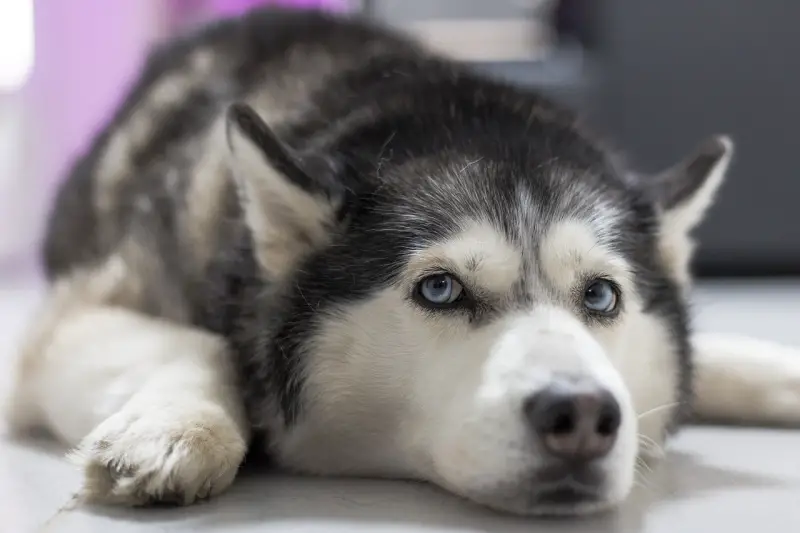
Some owners seek them out for specific tasks because of these attributes. Their “need for speed” for example makes them perfect agility dogs. It can also lead to problems at home though.
In my work as a dog trainer, I have encountered some working dogs from the breeds above that were so keen on staring at and pursuing anything that moved that they would watch rays of sunlight for hours in order to find dust to chase and bite.
Of course, if you have a dog that has this level of prey drive, it will be extremely difficult to teach him that the cat should not be something he “hunts”. Many owners of the dog breeds above try and fail to introduce them to their cat safely, eventually settling on a system where cat and dog always have to be separated.
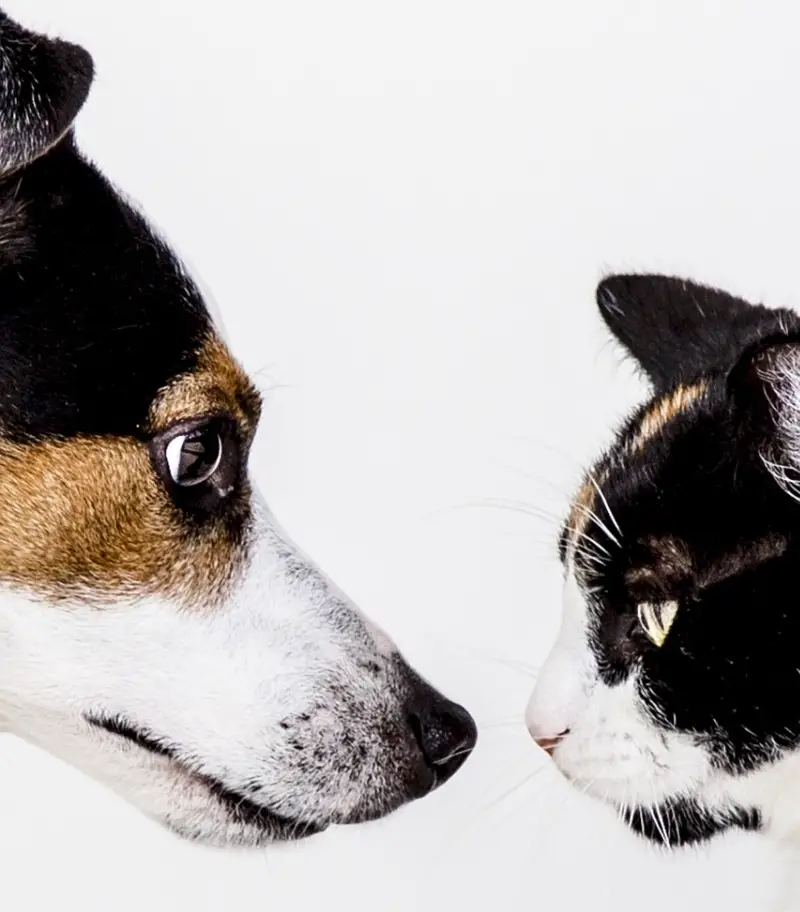
However, it does not have to be that way!
Instead, you can choose your dog breed smartly and set your dog and cat up for success.
Dog Breeds that do Well with Cats
The breeds that do well with cats are those that were not bred with the purpose of pursuing motion or hunting.
Any kind of small companion breed will do great, for example:
- Bichon Frise
- Cavalier King Charles Spaniel
- Maltese
- Pomeranian
- Pug
- Pekingese
- Chihuahua
- Shih Tzu
These dogs have low or no desire to chase. Their prey drive is basically non-existent once they reach adulthood. They enjoy snuggling on the couch and long naps in the sun – just like our cats do!
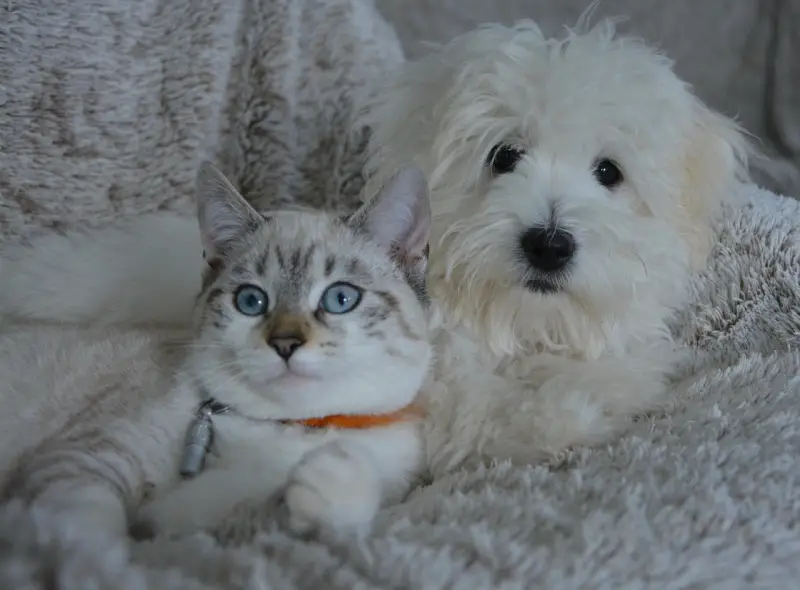
Of course, even these dogs need to always be supervised with cats when they are first introduced. Every puppy is curious and can become too much for a cat. You need to manage your cat’s and dog’s interactions in order to let them develop a healthy relationship.
What to Watch Out For
When you are adding a puppy to your family, you want to be especially mindful of the times of the day when the puppy becomes a bit “crazy”. This usually happens first thing in the morning and at night. The wildness at night can be especially pronounced – we dog trainers call it the “witching hour”. During this time, your puppy might zoom around, try to bite and tug on your sleeves and pants, chew up things he shouldn’t and also pester your cat.
It is crucial that you separate him from your cat during these times. Your puppy should never be allowed to act out his craziness on your cat.
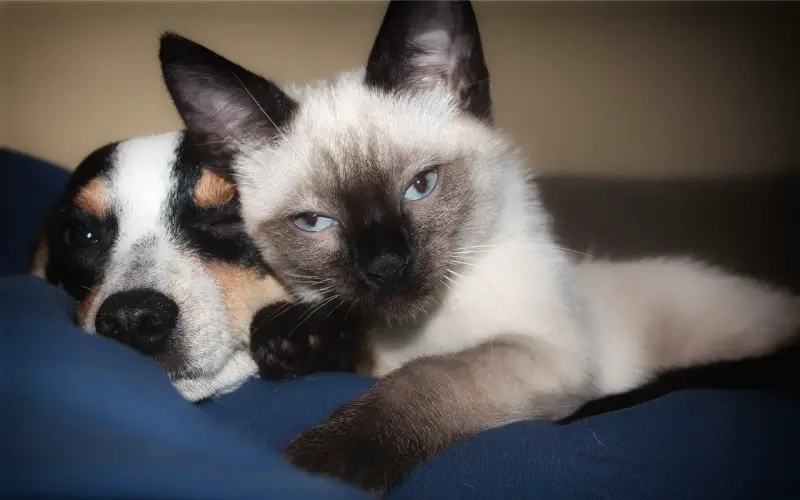
Crafting Good Interactions
Your cat probably enjoys your dog best when he is calm and tired. These are the times during which you should encourage their interactions. If your dog just played fetch in the yard or you just came home from a training class, he is likely to be tired and ready for a nap. This is a perfect time to let him be around your cat. The cat will appreciate the dog being relaxed and quiet and might even come over to snuggle up.
It’s important that you take care to craft these beneficial interactions between your dog and cat. The more you can make them happen, the faster they will become friends.
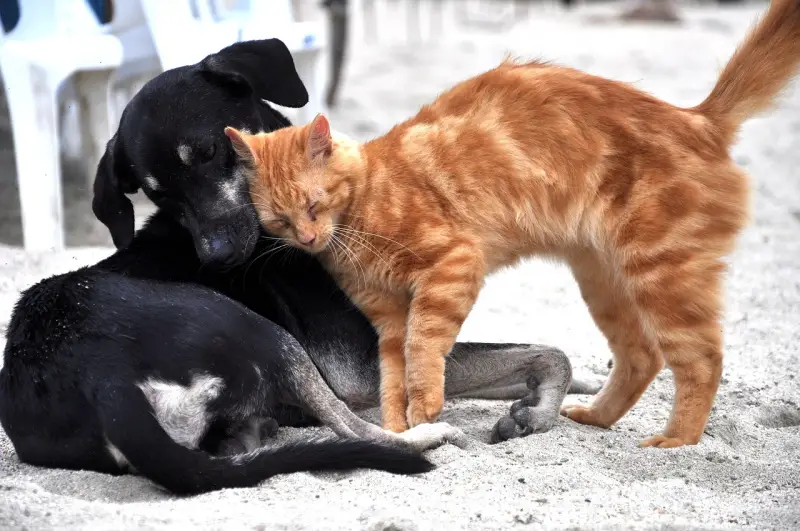
The Bottom Line
Cat and dog relationships often become difficult when the dog has a high prey drive or is very motion-sensitive. If he was originally bred to hunt or herd, the drive to run after anything that moves is very strong. The cat will inadvertently trigger this motivation, and it can be very difficult to undo such an ingrained hunting drive.
The best and easiest way to set your dog and cat up for success is to choose a breed that does not have a strong prey drive. Most small companion dogs are perfect for this. They do not only not chase, but usually become couch potatoes once they reach adulthood. This makes them perfect companions for your cat – they often become snuggle buddies and really enjoy each other.
Take care to craft good interactions between both pets by only letting them interact when the dog is calm. If your puppy has his “crazy hour”, he should not be around your cat – or the cat will certainly turn up her nose at him!
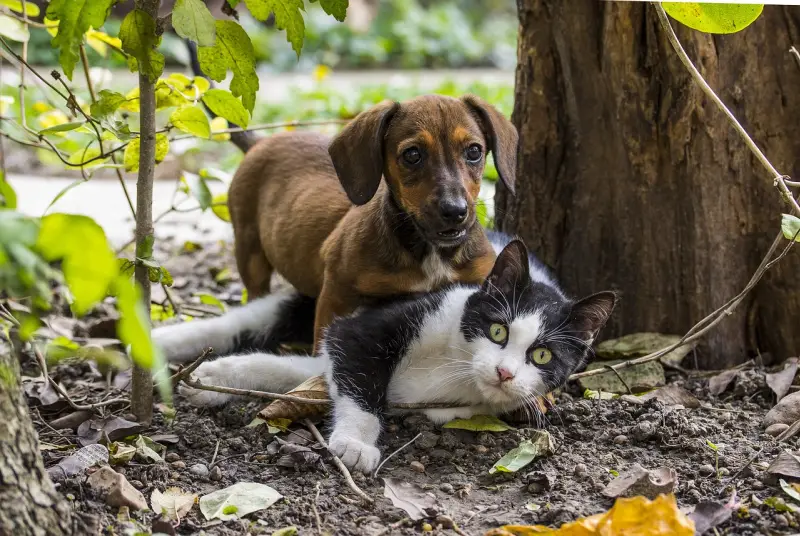
Author Bio
This guest post was kindly contributed by Steffi Trott – owner and founder of SpiritDog Training. Originally training dogs in-person, she added online training to her business in 2018. Steffi strives to provide game-based, positive training solutions for owners and their dogs. When she is not training other owners’ dogs, she competes in dog agility or hikes in the New Mexico and Colorado wilderness with her own 4 dogs.
